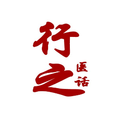【An e-book gift at the end of the article】
Cupping and manual therapy for wind-cold back pain. Wind-cold back pain is a common clinical condition characterized by soreness and heaviness in the shoulder and back, and even stiffness and limited movement. The author has achieved satisfactory results using cupping combined with manual therapy in clinical practice over the years, and reports the following. 1 Clinical Data 2 Treatment Methods 2.1 Cupping Method The patient sits upright, and a lubricant such as Wan Hua oil is evenly applied to the affected area. Then, a glass fire cup is taken, and using the flash fire method, it is attached to the affected area. The cup is moved back and forth along the Foot Taiyang Bladder Meridian (足太阳膀胱经) and Hand Taiyang Small Intestine Meridian (手太阳小肠经) on the upper and lower parts of the shoulder and back until the skin becomes red, congested, or even purplish, at which point the cup is removed. 2.2 Manual Techniques ① First, press, knead, and rub various acupoints: Dazhù (大杼), Fengmen (风门), Tianzong (天宗), Bingfeng (秉风), Jianzhongyu (肩中俞), Jianwaiyu (肩外俞), Jianjing (肩井), Dazhu (大椎), with techniques ranging from light to heavy, aiming to achieve qi sensation. ② One-finger Zen push, roll the bilateral trapezius and back along the Foot Taiyang Bladder Meridian, and lift Jianjing (肩井) acupoint. ③ Flick and knead the tense muscles of the shoulder and back, rub and shake both shoulders, combined with gentle rotations and movements of the neck, upper limbs, and shoulder and back adduction and abduction. ④ Pat and tap the shoulder and back to relax the muscles overall. 3 Efficacy Standards and Results 3.1 Efficacy Standards Cure is defined as the disappearance of clinical symptoms; significant effect is defined as a marked reduction in clinical symptoms; effective is defined as some reduction in clinical symptoms; ineffective is defined as no improvement in clinical symptoms. 3.2 Results Among 69 patients in this group, 50 were cured, 15 showed significant improvement, 3 were effective, and 1 was ineffective, resulting in a total cure rate of 98.4%. 4 Typical Case Chen, male, 35 years old, visited on March 28, 2001, complaining of shoulder and back soreness and heaviness caused by air conditioning while driving. At that time, the shoulder and back were stiff and restricted in movement, especially with severe pain along the inner edge of the scapula. Physical examination revealed palpable cord-like structures along the inner edge of the scapula, with significant tenderness, and tenderness (+) at Tianzong, Bingfeng, Jianwaiyu, etc. The diagnosis was wind-cold back pain. After treatment as described above, all symptoms disappeared after two sessions. 5 Insights 5.1 Wind-cold back pain is primarily characterized by soreness and heaviness in the shoulder and back, which falls under the category of “Bi Syndrome” in traditional Chinese medicine. The main cause is prolonged exposure to cold and damp environments, leading to the invasion of wind-cold-damp pathogens into the meridians and muscles, resulting in tightness of the meridians and insufficient nourishment of the muscles, causing pain. Therefore, treatment focuses on warming the meridians, promoting circulation, and invigorating blood flow. Cupping and manual therapy provide appropriate stimulation to the body’s surface meridians and acupoints, which can fully utilize the protective qi of the body surface, achieving the effects of warming the meridians, dispelling cold, invigorating blood circulation, and alleviating pain. 5.2 The shoulder and back are traversed by the Foot Taiyang Bladder Meridian, Governor Vessel (督脉), and Hand Taiyang Small Intestine Meridian. According to the principle of “where the meridians pass, the treatment is effective,” the treatment primarily targets these three meridians, following their pathways and selecting acupoints to expel pathogenic factors. 5.3 Western medicine considers this condition to be caused by soft tissue strain, inflammatory changes, or cold exposure in the muscles of the shoulder and back, leading to local soft tissue edema and inflammatory exudation, followed by adhesions and calcification of the rotator cuff, resulting in pain and limited function. The above treatments can improve blood circulation, accelerate the absorption of exudates, and promote the repair of affected tendons and ligaments, thereby relieving adhesions, reducing inflammation, and restoring body function.

